What does AEC mean?
The system AEC is the combination of various components and they work together along a shared value chain:
Architecture: The discipline dealing with the design of buildings and constructions. The architects design buildings considering various functional and esthetic uses and at the same time keeping in mind the environment, the purpose, and the occupants’ needs. They move from conceptual design to construction documents.
Engineering: The groundwork that is critical in the realization of the architectural design devoid of any design and construction loopholes. It entails all subdivisions of the architectural engineering field; structural engineering (for the buildings), mechanical engineering (HVAC), electrical engineering (power distribution), and even civil engineering (for the infrastructure projects)
Construction: The implementation of architectural and engineering design. Construction specialists supervise building, project management, cost estimation, quality control, and multi-site coordination.

What does AEC mean in today's context?
In today's landscape, AEC has evolved beyond basic building processes. The industry is experiencing unprecedented digital transformation, with artificial intelligence being integrated into various facets—from advanced design simulations to streamlined project execution. Moreover, sustainability has become central to AEC projects, with professionals embracing renewable energy sources, eco-friendly materials, and efficient waste management practices.
The sector is also witnessing a surge in construction mega-projects and facing challenges like supply chain disruptions and inflationary pressures that impact timelines and budgets.
A Brief History of the AEC Industry
The roots of what we know today as the AEC industry date back thousands of years, even if the more formal weaving together of architecture, engineering, and construction is somewhat younger. Throughout history, many designers were also the builders. Without the contemporary distinctions between the disciplines, architectures such as that created by ancient Egyptians, Greeks and Romans were produced. Master builders like the designer of Egypt's first pyramid, Imhotep, served as both architects and engineers overseeing the entire construction process from start to finish.
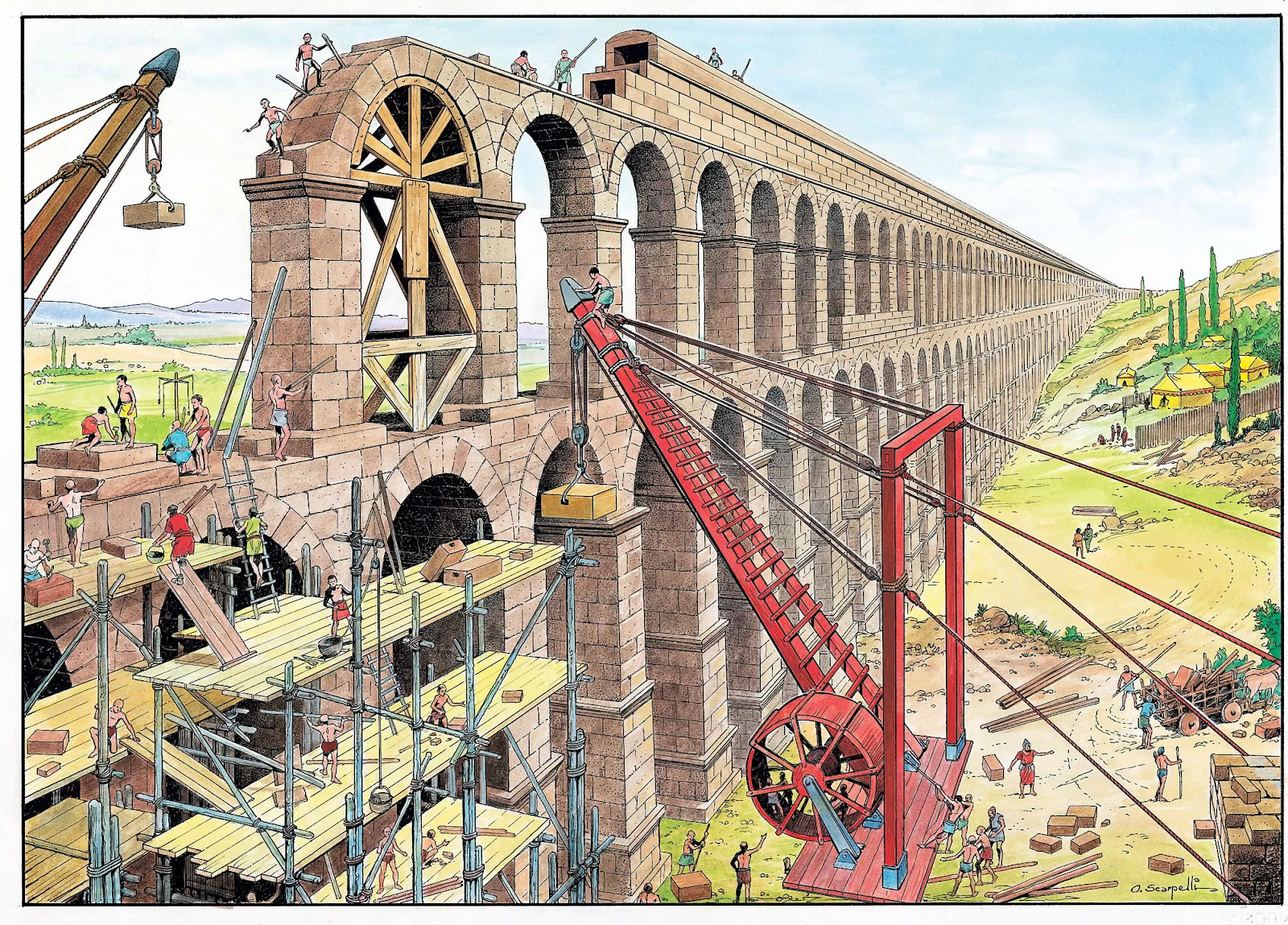
.The 19th century brought formal professional organizations—the American Institute of Architects formed in 1857, while engineering societies emerged across various specialties. Initially, these professions operated largely independently, with architects focusing on esthetics and spatial design, engineers on technical systems, and builders on physical execution.
However, the 20th century saw increasing complexity in building projects, particularly after World War II, when construction boomed globally. This complexity necessitated better coordination, gradually bringing these separate disciplines closer together.
The term "AEC" itself gained prominence in the 1980s and 1990s, coinciding with the digital revolution. Computer-aided design (CAD) systems transformed documentation processes, while the internet later enabled unprecedented collaboration across disciplines.

The 21st century solidified the integration of these fields through technologies like Building Information Modeling (BIM), which created shared digital environments where architects, engineers, and construction professionals could collaborate simultaneously on unified project models.
Having such a vast, auxiliary supporting network is reflective of today's AEC industry being the end-point result of a long evolutionary process – many of these disciplines have lived in their own little world for centuries and only recently are able to work more openly with each other thanks to digital tools, integrated processes and sustainability goals that would have blown Dieter Rams' mind back in the day.
The continuing state of the AEC industry has created a particularly interesting convergence between traditional practices and modern innovation. While the industry has evolved from a time of great master builders to now a field populated mostly by specialized professionals, it also reflects society's changing technological capabilities and requirements.
The professional integration has seen a faster growth over the last decades. What started as loose collection amongst numerous disciplines elevated to nicely-defined collaborative structures fleshed out via get admission to digital systems. The integration is especially fitting as buildings and infrastructure projects face greater complexity than ever.
Integrated project delivery methods are blurring the lines between architecture, engineering and construction more than ever. In particular, the expansionary AEC services offered today by many firms stand as a stark departure from what had long been established as discipline-specific silos throughout the entire 20th century.
The AEC industry's digital transformation represents perhaps the most significant shift in its modern history. Beyond basic CAD and BIM implementation, firms increasingly adopt cloud-based workflows allowing real-time collaboration regardless of physical location. Essentially, this shift in technology has transformed access to modern tools in design and construction, allowing for more competition and level playing field among smaller and larger firms.
As a significant part of the modern AEC industry, each of them seeks to improve on the traditional methods and at the same time, provide new technologies for construction. With that, the modern AEC specialists need to have the traditional skills and modern approaches to construction that deal with the building science and the changing industry digital tools.
In the year 2025, especially with the architecture, engineering, and construction industry, there are a few significant trends that need to be looked at. The past timeline in the evolution of AEC gives us an important glimpse of consideration on the current technologies not only as improvements but as innovations in the imagination, design, and construction of buildings.
AEC Management Softwares of 2025
The market’s packed with construction coordination software, but a few platforms stand out for AEC firms. Each has unique strengths, so evaluating them against your project needs is key. Based on our experience, here’s a quick snapshot of the most trusted construction coordination software used by AEC professionals across the country.
- Autodesk Construction Cloud
- Procore
- Trimble Connect
- Revizto
- BlueBeam
Let’s do a quick review:
1. Autodesk Construction Cloud
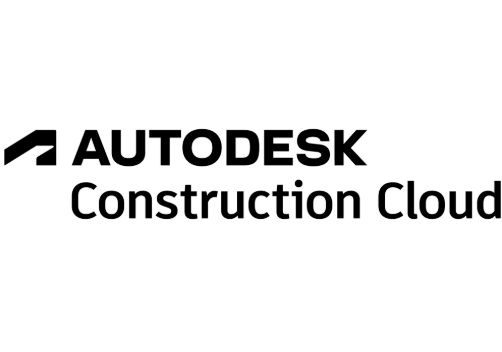
- Autodesk Construction Cloud (ACC) brings together a family of connected applications.
- Autodesk Docs for a secure common data environment
- Build for field-ready project management
- Takeoff for 2D/3D quantity take-offs
BIM Collaborate to connect decision makers to manage design reviews and automate model coordination with trades
By keeping drawings, RFIs, submittals, and models in one ecosystem, ACC eliminates the version-confusion that plagues many construction coordination software setups.
Site teams can raise an issue in Build, link it to the exact spot in the model, and office staff see the change instantly in Docs. No messy email chains, no delay. Because everything runs on the same cloud platform, design iterations flow straight from Revit to the field without format hand-offs.
Teams already using the broader Autodesk AEC Collection can carry their models through to construction with almost zero rework.
2. Procore
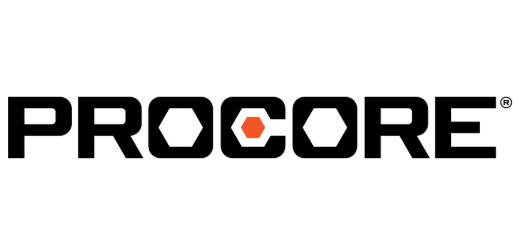
Procore is a big name, especially popular with GCs and subcontractors here in Australia. It’s a comprehensive construction project management collaboration software aiming to bring all your people, documents, and processes together.
Document sharing, issue tracking, and site instructions are all streamlined, with a mobile app that’s genuinely built for field use. BIM support is available, though deeper BIM coordination often involves integrations. However, this platform’s real draw lies in uniting office and field workflows.
3. Trimble Connect

Trimble Connect positions itself as a Common Data Environment. So, it’s perfect for connecting models, drawings, and teams across disciplines. Also, it plays well with multiple file types, DWG, IFC, SketchUp, and Revit. And offers robust model viewing, task tracking, and mixed-reality access.
Real-time task management, annotations, and mobile access keep collaboration smooth across desktop, web, or even mixed reality. Integrated with Trimble’s ecosystem, like Jobpac or Tekla, it’s a flexible choice for diverse stakeholders. Also, with built-in clash detection and open integrations, it supports deeper levels of BIM coordination without locking you into one software stack.
4. Revizto
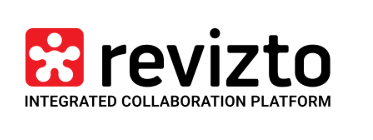
Unlike broader project management platforms, Revizto focuses specifically on streamlining BIM coordination through visual, model-based collaboration. From design markups to quantity take-offs, it’s the go-to construction BIM collaboration tool for document-centric workflows.
By pulling models from Revit, Navisworks, or AutoCAD into one navigable platform, it simplifies BIM in construction for all stakeholders. And, Revizto centralises issue tracking within 2D sheets and 3D models, letting teams spot clashes or design issues fast.
5. Bluebeam (Revu & Cloud)

Bluebeam Revu, along with its cloud component, is almost standard issue in many Aussie design and construction offices. From design markups to quantity take-offs, it’s the go-to construction collaboration tool for document-centric workflows. Studio Sessions lets multiple users mark up a document in real time.
While not a BIM-first platform, and more about rock-solid document workflows, Bluebeam is still ideal for designers and contractors who live in PDFs. Whether you’re reviewing drawings or managing approvals, Bluebeam simplifies collaboration and ensures everyone stays aligned throughout the project lifecycle.
Economic Impact of the AEC Industry
The AEC industry is a critical sector of the U. S. economy— having fueled about $2.1 trillion in economic activity in 2023 which represents nearly 4.1% of the U. S. GDP. The AEC sector literally constructs the buildings we work in, the roads we drive on, and the infrastructure that supports our daily lives.
What does AEC mean exactly? This three-letter acronym is used to identify the synthesis of disciplines that design, engineer and build our physical environment. The Global AEC market is expected to grow at a remarkable CAGR of 10.3% from 2024 to 2032 after being valued at roughly USD 10.05 billion in 2023, which means it will most likely reach over USD 24.36 billion by the end of that period. The industry employees over 7.7 million workers in U. S. alone and continues to experience growth in demand due to the need of infrastructure renovation and housing.
Current Challenges Facing the AEC Industry
The Architecture, Engineering, and Construction (AEC) industry is a dynamic and ever-evolving sector that plays a crucial role in shaping the built environment. However, it also faces several challenges that require careful attention and innovative solutions. Let's explore some of these obstacles in more detail:
Labor Shortages and Skills Gap
As experienced professionals retire, there is a scarcity of qualified personnel to fill their roles. This shortage is further exacerbated by the fact that younger individuals are often opting for other career paths, such as technology or finance. To address this issue, focus on attracting and retaining talent. Promoting vocational training and apprenticeship programs can help develop a pipeline of skilled workers. Collaborations between educational institutions and industry professionals can also provide students with hands-on experience and a better understanding of the industry's opportunities. Moreover, it is crucial to emphasize the importance of continuous learning and professional development within the AEC industry. Encouraging professionals to upgrade their skills through workshops, seminars, and online courses can help bridge the skills gap and ensure a competent workforce for the future.
Safety Concerns in the AEC Industry:
Construction sites are inherently hazardous, and accidents can result in severe injuries or even fatalities. Prioritize safety measures and invest in the latest technologies that improve site monitoring and identify potential hazards. Fostering a culture of safety within organizations is also crucial. This involves promoting open communication, providing regular safety training, and recognizing and rewarding individuals who prioritize safety in their work.
Regulatory and Compliance Issues:
The AEC industry is subject to numerous regulatory and compliance requirements. Navigating complex building codes, zoning regulations, and environmental standards can be challenging for professionals in the field. To ensure successful project execution, stay abreast of evolving regulations and maintain compliance measures. Collaborating with regulatory bodies and industry associations can also provide valuable insights and guidance. Also, implementing technology solutions can streamline compliance processes and reduce the risk of non-compliance.
How Sustainability is Redefining the AEC Industry
Sustainability has become a cornerstone of the architecture, engineering, and construction industry, reshaping how projects are conceived, designed, and delivered.

LEED and green certifications
Green building certifications have emerged as the global standard for measuring sustainability performance. LEED-certified buildings demonstrate remarkable efficiency, with CO2 emissions 34% lower, energy consumption 25% less, and water usage 11% lower than conventional buildings.
Energy-efficient and net-zero buildings
Net-zero energy buildings (NZEBs) produce as much energy as they consume annually through two primary strategies: minimizing energy requirements and implementing renewable energy systems.
Use of recycled and sustainable materials
Bio-based materials like cross-laminated timber offer approximately one-quarter the carbon footprint of conventional materials. Bamboo has gained popularity as a sustainable alternative, reaching maturity in just 3-5 years while sequestering carbon at rates higher than almost any other plant.
Water conservation and passive design
Strategic approaches include efficient plumbing fixtures, irrigation controls, and water recycling systems. Passive design strategies effectively reduce energy consumption by 35.4% through techniques like thermal mass utilization, natural ventilation, and strategic building orientation. These approaches create comfortable indoor environments while minimizing mechanical system requirements.
AEC Industry Trends in 2025
In 2025, technological advancements are rapidly reshaping what the AEC industry encompasses. These innovations are not merely changing workflows but fundamentally transforming how buildings and infrastructure are conceived, designed, and delivered.
Building Information Modeling (BIM)
BIM has transformed from only an aid in a designing to a comprehensive process which incorporates organized multi-faceted information within various disciplines of a project throughout its life cycle. At the moment, the rate of BIM adoption differ from discipline to discipline, for example, in architecture. Architects use it the most, with 43% adopting it in over 60% of their projects, in comparison to 23% of contractors. The advantages are considerable, which includes up to 40% reduction in unplanned changes, a 3% accuracy rate in cost estimation, and up to 80% reduction in the time it takes to estimate costs. The collaborative nature of BIM has yielded great results with 79% of users reporting, CA and project coordination enhancements, fewer RFIs, and better overall results in project performance.
Artificial Intelligence and Machine Learning
AI is changing the normal AEC industry operations with its new features and enhancements in design, risk evaluation, and even the management of projects. Now, machine learning algorithms are able to analyze and optimize various designs, and even predict project timelines far into the future with uncharacteristic accuracy. AI has yielded a great number of efficient results in practical use, for example, Halff has a storm drain pipe’s defect detection model which offers quality control automation and saves Fort Worth USD 1 million each year.
Digital Twins and Simulation
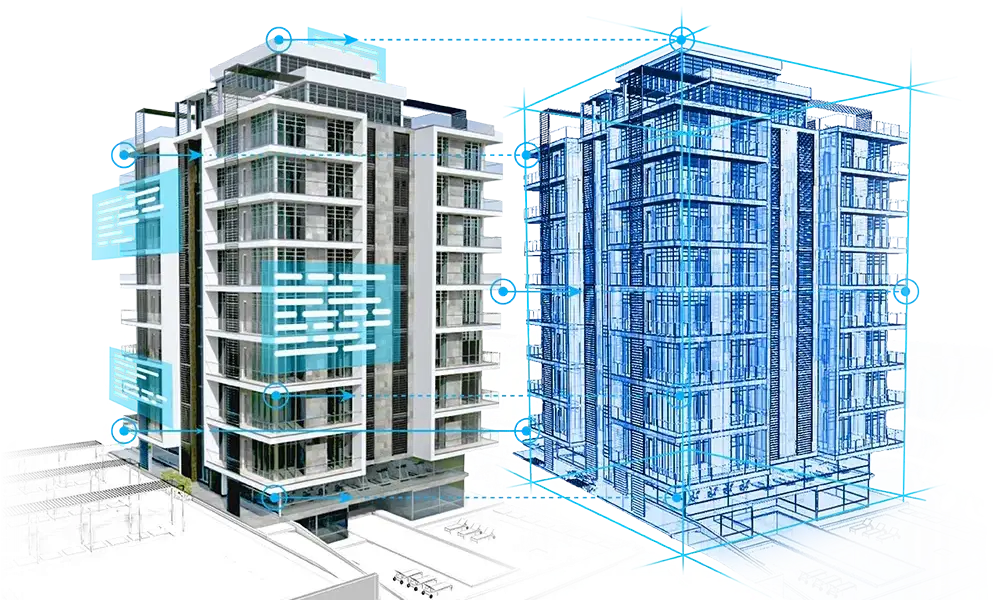
Digital twins offer multi-dimensional views into both design and performance, creating virtual replicas that simulate real-world conditions. These systems exist across five maturity levels:
- Level 1 (Descriptive): Visual replicas with editable design data
- Level 2 (Informative): Integration with sensors for real-time insights
- Level 3 (Predictive): Real-time data capture for issue identification
- Level 4 (Comprehensive): Advanced modeling for future scenarios
- Level 5 (Autonomous): AI-powered learning and decision-making
Modular and Prefabricated Construction
Prefabrication is gaining momentum as a strategy for improving construction speed, quality, and sustainability. The North American modular industry has grown substantially, capturing 6.64% of new construction starts in 2023 with a total project value of approximately USD 14.60 billion. Looking ahead, the U.S. modular construction market alone is projected to grow at a CAGR of 7.8% from 2023 to 2030.
Cloud Collaboration and Data Interoperability
As AEC firms embrace hybrid cloud models (81% according to recent data), cloud-based platforms are addressing fragmentation issues that traditionally plague the industry. Indeed, interoperability problems cost the AEC industry an estimated USD 15.8 billion annually. Open-data standards like IFC are increasingly crucial, providing the common data language needed for seamless collaboration across disciplines and throughout a project's lifecycle.
Conclusion: Why Understanding the AEC Industry Matters
The AEC industry influences us heavily and at the same time serves as the AEC cornerstone to the economy and society since it actively shapes the our surroundings and simultaneously drives the economy. In the course of this article, we have discussed the structuring, operation, and the interconnected system of the architecture, engineering, and construction. This triad of specialties has the capabilities of refining our communities and cities by creating tangible structures as configurations of our abstract visions.
The AEC industry still has a lot in terms of scope, the industry has an 85 million dollar worth market, and employs a large population of people worldwide. Moreover, designers, engineers, and builders, require an in deployable collaboration in the designing, engineering and construction of infrastructural and micro level systems like bridges, hospitals and homes alike in order for the system to be both functional and sustainable.
In priority order, the AEC industry still has weak points such as innovation and innovation technology. The project delivery systems can be deal with by addressing industry issues such as communication and collaboration barriers, integration of building information modeling ai building modeling, clouds, and their interconnected systems, and the digital twin technology.
In addition to these issues, there still a lot of unattained targets still remaining. Compliance with security regulation sets a large scope as a unreliable line of regulation. Moreover, lack of human resource applicability adds to the industry revolutions of facing less than 85% of lack of effective and stable regulation sets.
FAQs
Q1. What does AEC stand for in the construction industry?
AEC stands for Architecture, Engineering, and Construction. It represents the three interconnected disciplines that work together to design, plan, and build our physical environment, from residential homes to large-scale infrastructure projects.
Q2. How significant is the AEC industry's economic impact?
The AEC industry has a substantial economic footprint, contributing approximately 13% to the global GDP. In the United States alone, it accounts for about 4.1% of the nation's GDP and supports millions of jobs across various skill levels.
Q3. What are some key technological trends shaping the AEC industry?
Major technological trends in AEC include Building Information Modeling (BIM), Artificial Intelligence and Machine Learning, Digital Twins, Modular Construction, and Cloud-based Collaboration tools. These innovations are improving efficiency, accuracy, and collaboration across projects.
Q4. What challenges does the AEC industry currently face?
The AEC industry faces several challenges, including labor shortages and skills gaps, safety and compliance issues, cost volatility and supply chain disruptions, and increasing regulatory complexity. These factors can impact project timelines, budgets, and overall execution.
Q5. How is sustainability being addressed in the AEC industry?
Sustainability is becoming central to AEC practices through green building certifications like LEED, the development of energy-efficient and net-zero buildings, use of recycled and sustainable materials, and implementation of water conservation and passive design strategies. These efforts aim to reduce the environmental impact of construction and improve building performance.



.jpeg)
